Abstract
Head orientation during auditory discriminations was studies in squirrel monkeys using a two-lever trial-by-trial procedure. Animals were studied using auditory discriminations based on the position of the sound and on the spectral content differences between a pure tone and a noise. After the percentage of correct responses reached asymptote, head orientation was measured using videotape recordings. Orientation occurred on virtually every trial and was under the control of the position of the sound under all conditions. Lever responding was controlled by the same parameters of the sound under some conditions, and by different parameters in others. Orientation and lever responding were correlated (a level response could be predicted from the direction of orientation) when both responses were under the control of the same parameters of the sound. The two responses were uncorrelated when they were controlled by different parameters of the sound. Orientation and lever responding were not functionally related.
Full text
PDF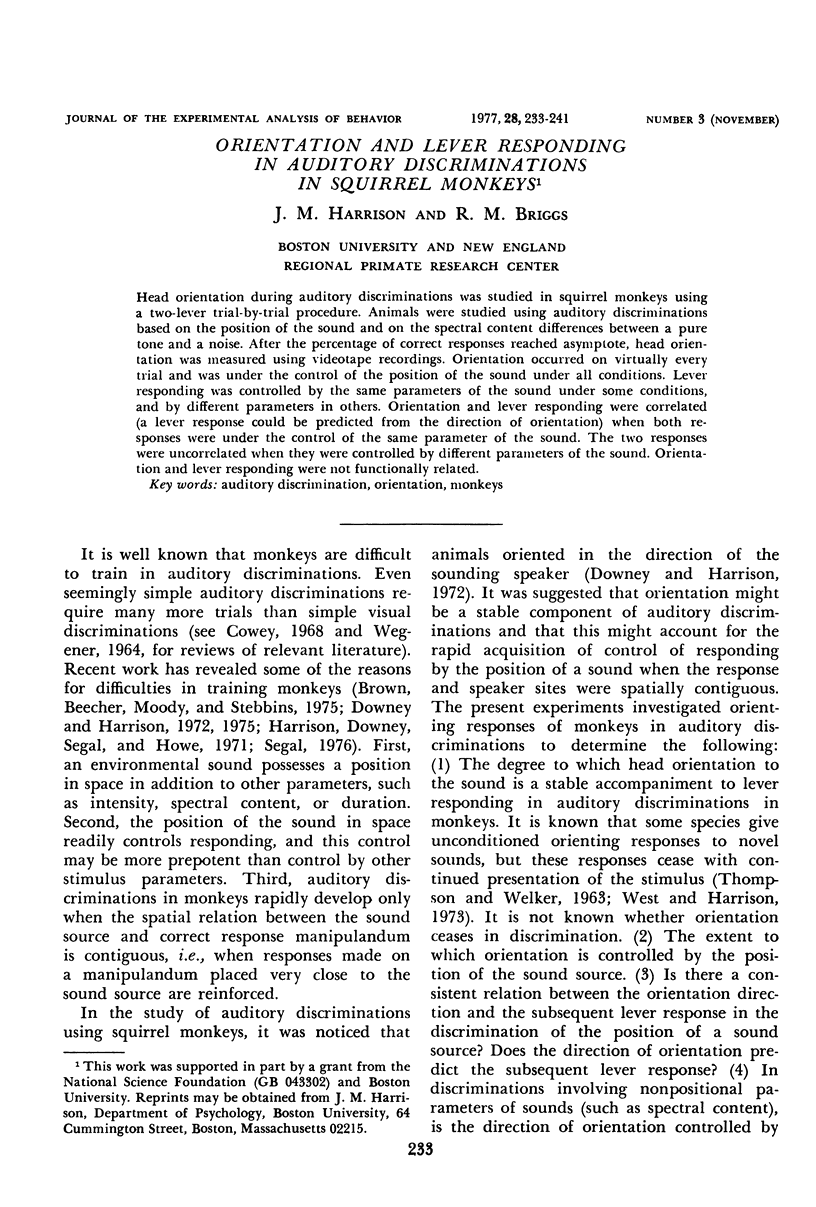
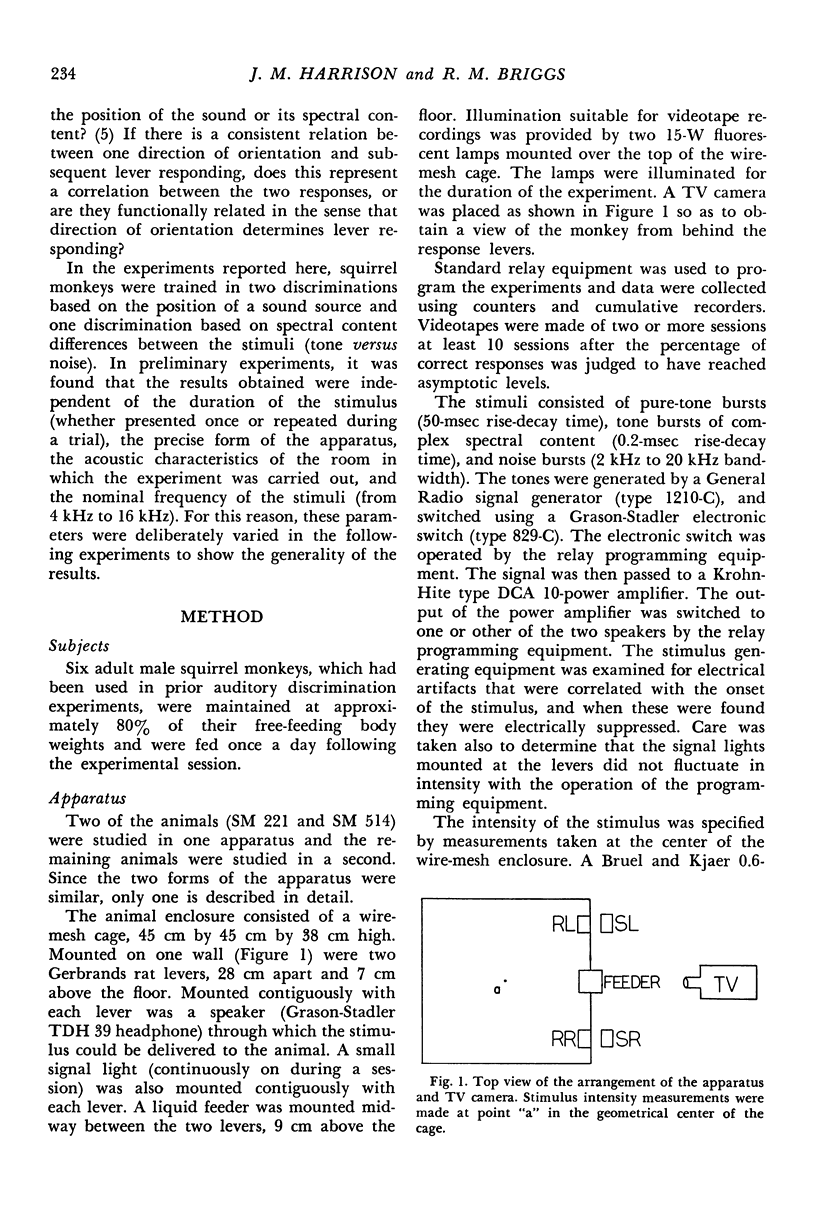
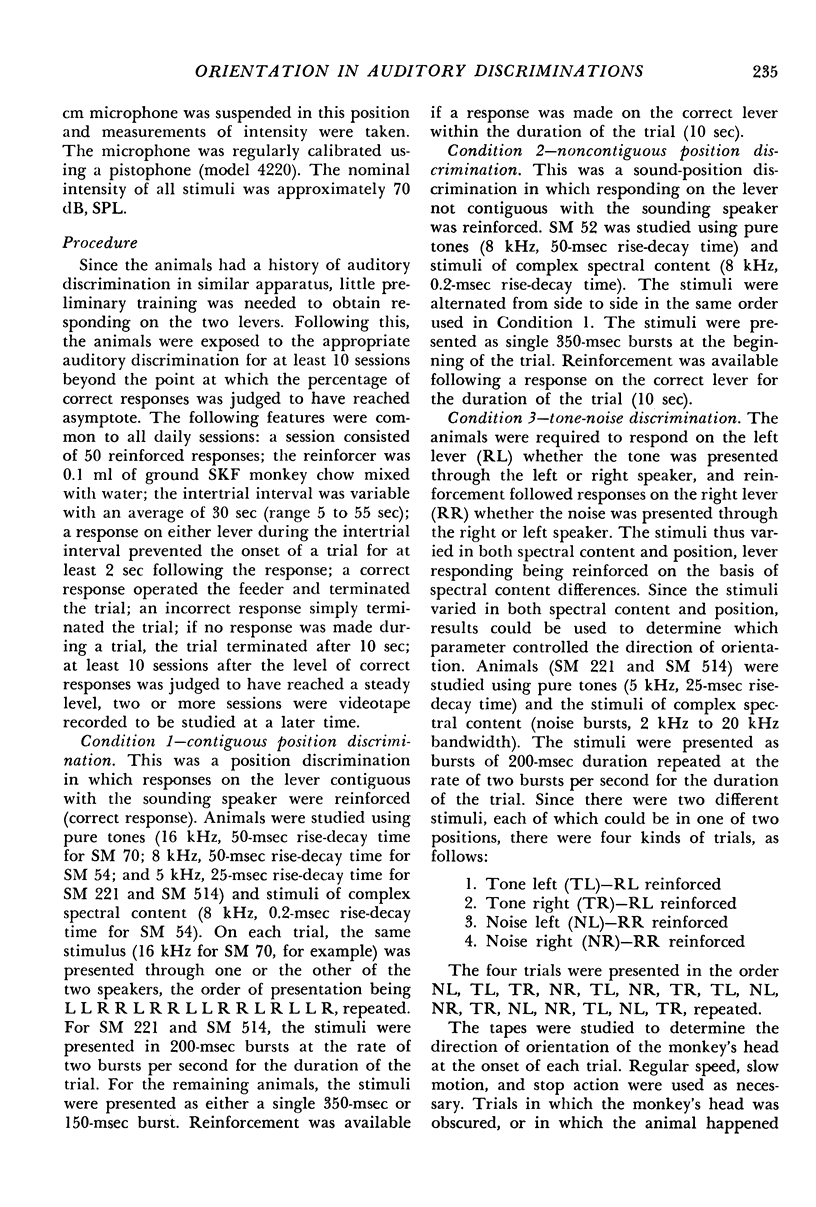
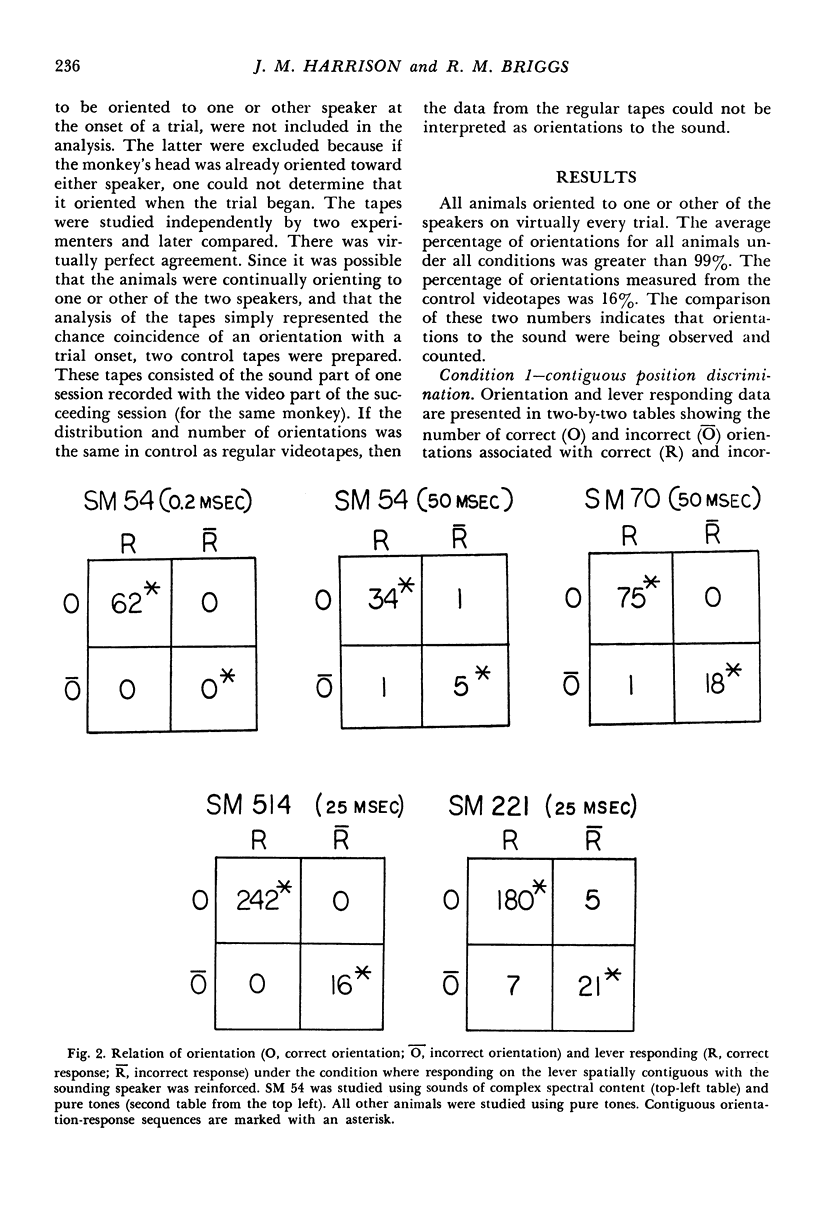
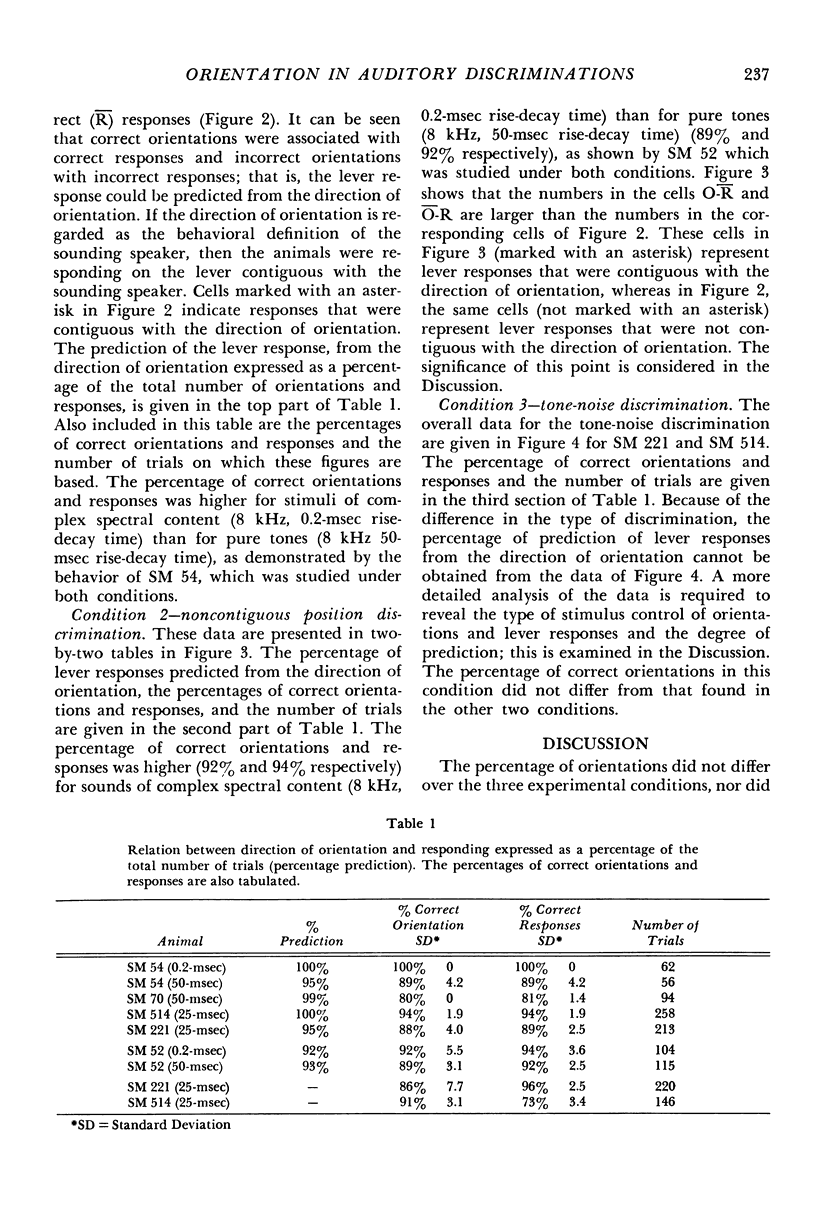
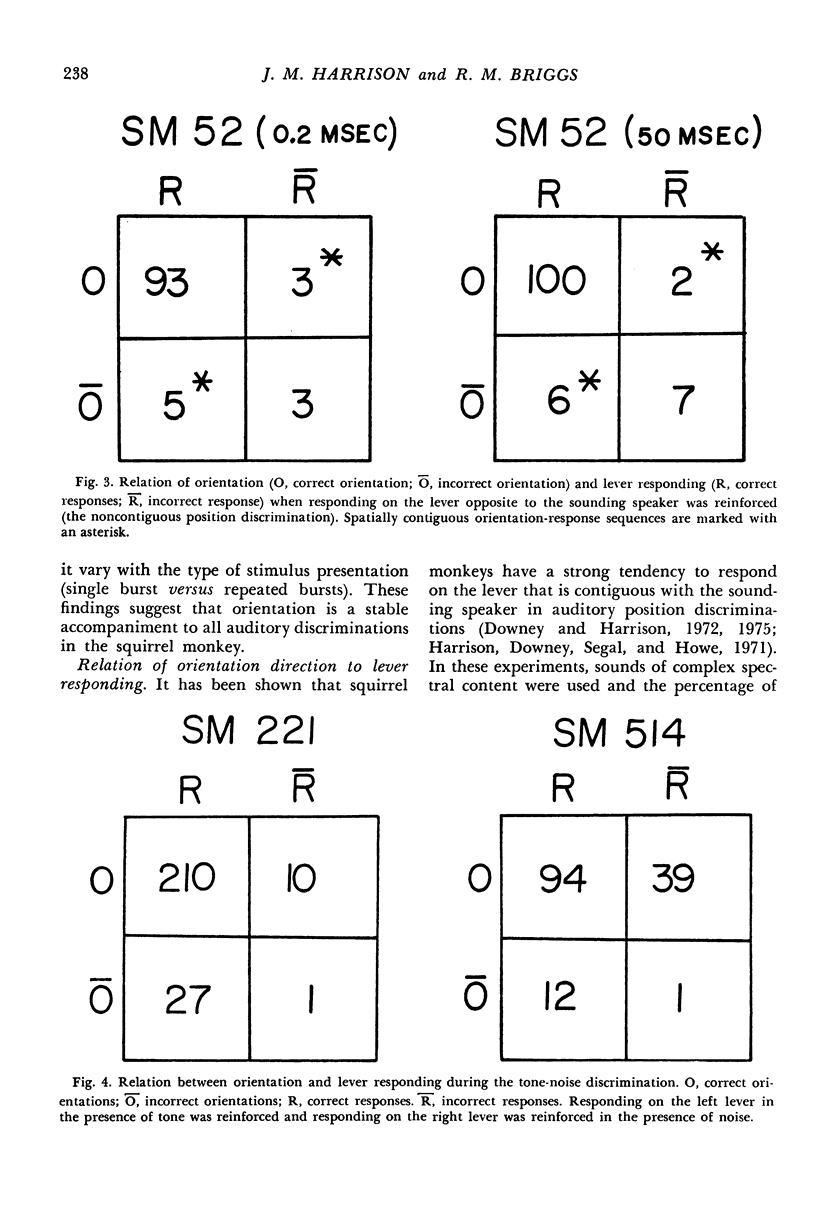
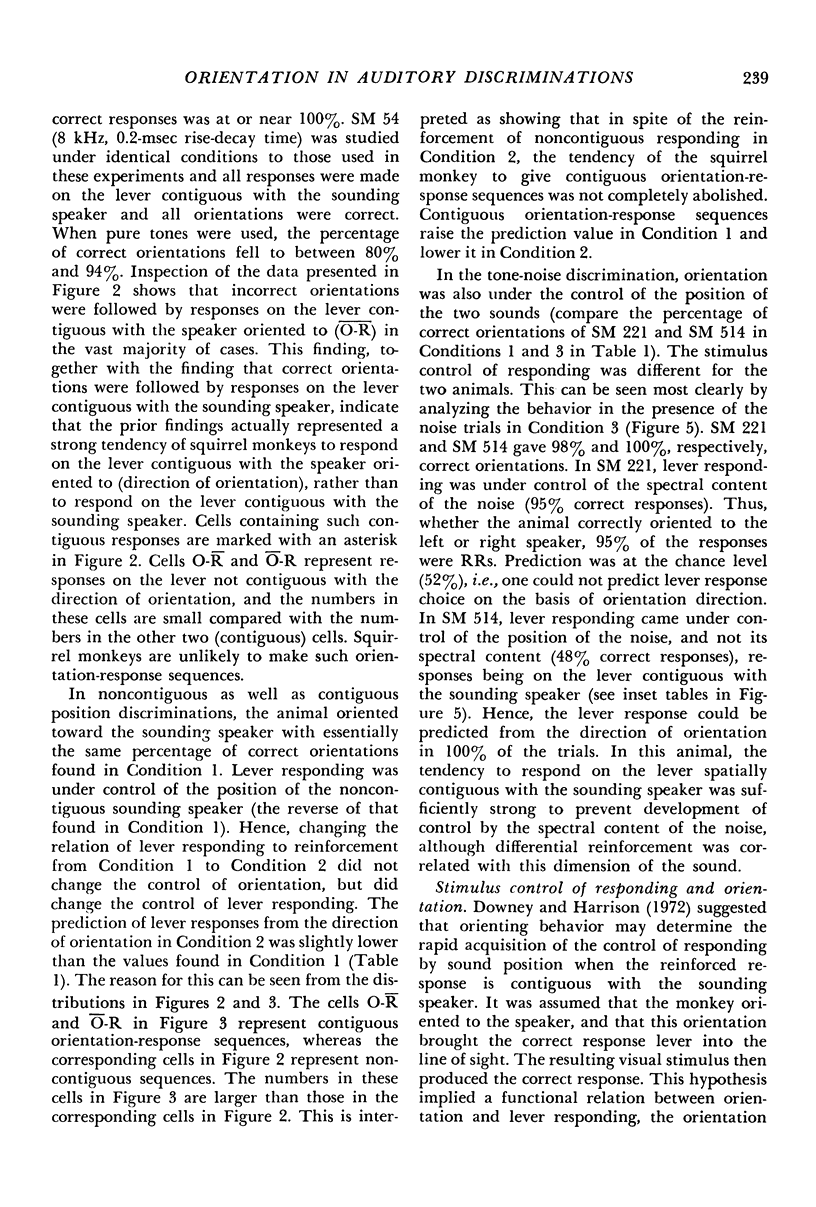
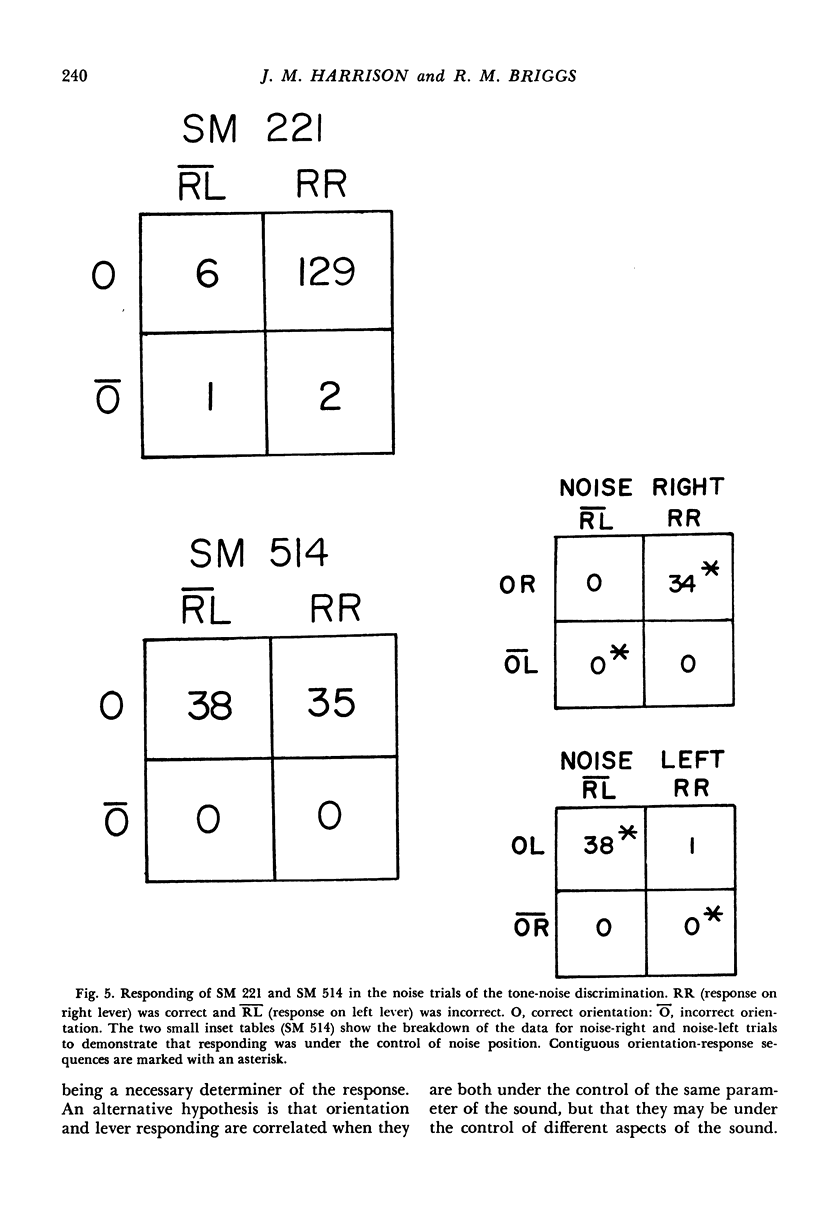

Selected References
These references are in PubMed. This may not be the complete list of references from this article.
- Beecher M. D., Harrison J. M. Rapid acquisition of an auditory localization discrimination by rats. J Exp Anal Behav. 1971 Sep;16(2):193–199. doi: 10.1901/jeab.1971.16-193. [DOI] [PMC free article] [PubMed] [Google Scholar]
- Casseday J. H., Neff W. D. Localization of pure tones. J Acoust Soc Am. 1973 Aug;54(2):365–372. doi: 10.1121/1.1913586. [DOI] [PubMed] [Google Scholar]
- Downey P., Harrison J. M. Control of responding by location of auditory stimuli: role of differential and non-differential reinforcement. J Exp Anal Behav. 1972 Nov;18(3):453–463. doi: 10.1901/jeab.1972.18-453. [DOI] [PMC free article] [PubMed] [Google Scholar]
- Downey P., Harrison J. M. Control of responding by sound location in monkeys: rapid acquisition in darkness. J Exp Anal Behav. 1975 Mar;23(2):265–269. doi: 10.1901/jeab.1975.23-265. [DOI] [PMC free article] [PubMed] [Google Scholar]
- Harrison J. M., Beecher M. D. Control of responding by the location of an auditory stimulus: role of rise time of the stimulus. J Exp Anal Behav. 1969 Mar;12(2):217–227. doi: 10.1901/jeab.1969.12-217. [DOI] [PMC free article] [PubMed] [Google Scholar]
- Harrison J. M., Downey P., Segal M., Howe M. Control of responding by location of auditory stimuli: rapid acquisition in monkey and rat. J Exp Anal Behav. 1971 May;15(3):379–386. doi: 10.1901/jeab.1971.15-379. [DOI] [PMC free article] [PubMed] [Google Scholar]
- THOMPSON R. F., WELKER W. I. ROLE OF AUDITORY CORTEX IN REFLEX HEAD ORIENTATION BY CATS TO AUDITORY STIMULI. J Comp Physiol Psychol. 1963 Dec;56:996–1002. doi: 10.1037/h0048640. [DOI] [PubMed] [Google Scholar]
- West C. D., Harrison J. M. Transneuronal cell atrophy in the congenitally deaf white cat. J Comp Neurol. 1973 Oct 15;151(4):377–398. doi: 10.1002/cne.901510406. [DOI] [PubMed] [Google Scholar]


